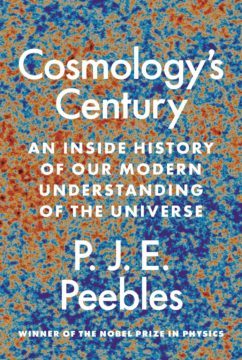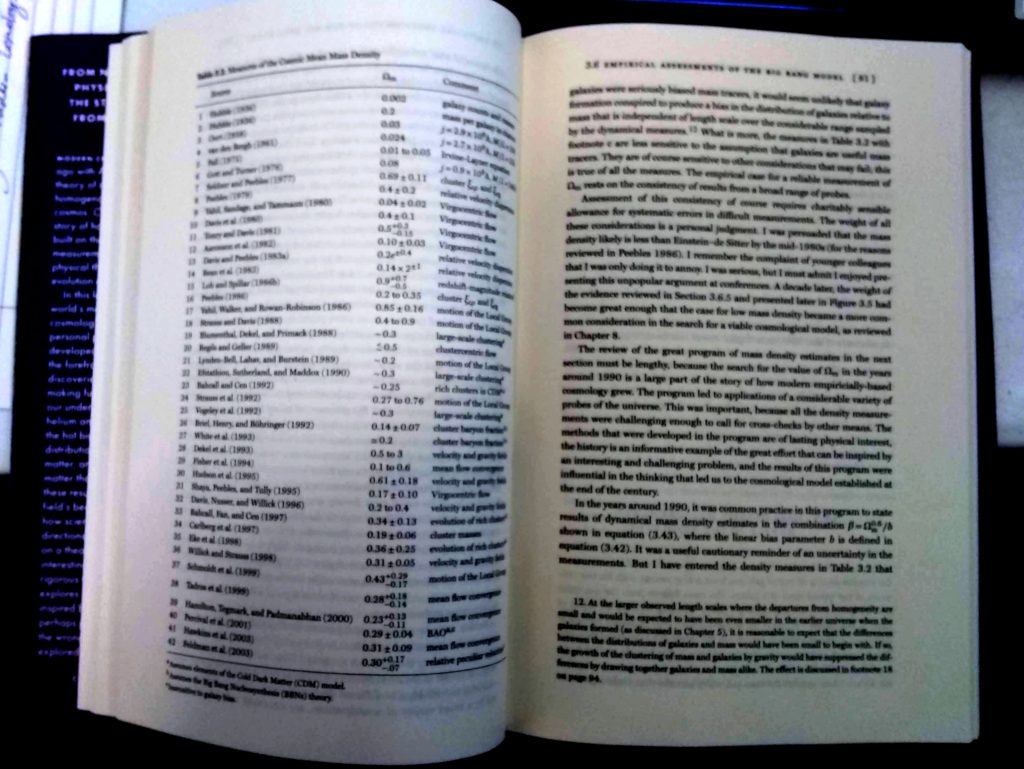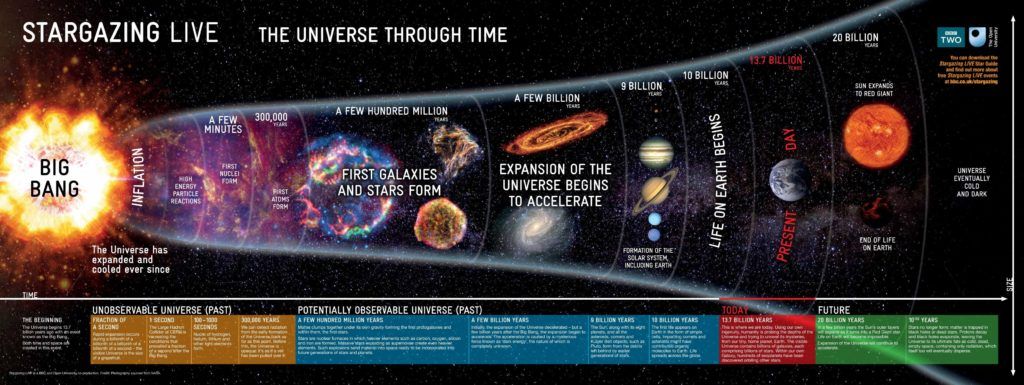by David Kordahl
 When I was seventeen years old, I took my first college science course, a summer class in astronomy for non-majors. The professor narrated his wild claims in an amused deadpan, calmly showing us how to reconstruct the life cycle of stars, and how to estimate the age of the universe. This course was at the University of Iowa, and I imagine that the professor was accustomed to intermittent resistance from students like me, whose rural, religious upbringing led them—led me—to challenge his claims. Yet I often found myself at a loss. The professor used a soft sell, and his claims seemed somewhere beyond the realm of mere politics or belief. Sure, I could spot a few gaps in his vision (he batted away my psychoanalytic interpretation of the Big Bang by saying he had never heard of Freud), but I envied him. I wished that my own positions were so easy to defend.
When I was seventeen years old, I took my first college science course, a summer class in astronomy for non-majors. The professor narrated his wild claims in an amused deadpan, calmly showing us how to reconstruct the life cycle of stars, and how to estimate the age of the universe. This course was at the University of Iowa, and I imagine that the professor was accustomed to intermittent resistance from students like me, whose rural, religious upbringing led them—led me—to challenge his claims. Yet I often found myself at a loss. The professor used a soft sell, and his claims seemed somewhere beyond the realm of mere politics or belief. Sure, I could spot a few gaps in his vision (he batted away my psychoanalytic interpretation of the Big Bang by saying he had never heard of Freud), but I envied him. I wished that my own positions were so easy to defend.
Seventeen years later, I’m now in the professor’s position, defending physics to doubting undergraduates. My views now are mostly easy to defend. Yet as someone who never progressed much beyond an undergrad knowledge of astronomy (I took one graduate cosmology course and left it at that), I’ll admit that some of the things that bothered me back then still bother me today. Some of the grandest claims in physics are based almost solely on astrophysical evidence, including the assertion that our standard physics accounts for less than 5% of what’s really there, with the other 95+% of mass-energy in the woolly categories of “dark energy” and “dark matter.” Such views are mainstream enough now to invite few scientific naysayers.
Last year, half of the Nobel Prize in Physics was awarded to P.J.E. Peebles, who has as good a claim as anyone as a forefather of the modern “standard model” of cosmology, the ΛCDM model. (Roughly, the “Λ” in this model accounts for dark energy, in the guise of Einstein’s cosmological constant, and the “CDM” is cold dark matter, which is “cold” in the sense that it moves around with galaxies and doesn’t whiz off near the speed of light.) In his Nobel lecture, Peebles included a “brief commercial interruption” to mention he had written a history of cosmology, and I knew I would eventually read it, if only to quiet my own doubts. But Cosmology’s Century: An Inside History of Our Modern Understanding of the Universe does less to quiet doubts about whether the ΛCDM model is true than to argue that the model was inevitable, given the observations that needed to be explained.
The aforementioned Nobel Lecture by P.J.E. (“Jim”) Peebles.
Upon watching his Nobel lecture, one might judge that Peebles is good company, a man who remains self-effacing despite his major contributions to just about every aspect of physical cosmology. (“I could see a few things to do, and that led to a few more things…and that, iterated, carried me through my entire career.”) And in the intro to his new book, Peebles signals his aspirations toward friendliness. “I intend the explanations in this book to be understandable to an undergraduate who is thinking of majoring in physical science, and to a nonscientist who is fascinated by what has been learned about stars, galaxies, and the expanding universe and is willing to skip over the technicalities and pay attention to the descriptions.”
This is a pretty good description of a different sort of book (for a gentle personal memoir of a life in cosmology, I might recommend Robert P. Kirshner’s The Extravagant Universe), but it is a pretty bad description of Cosmology’s Century. My feeling is that if a third-year physics major could make it though, they would be doing pretty well. Peebles has ostensibly written an “inside history,” but it’s very far from the gossipy tell-all territory of The Double Helix. Peebles has the habit of recounting his personal experiences by citing a paper with his name on it, withholding much of the personal warmth that one expects from a memoir.
By the third chapter, “Cosmological Models,” I got the impression that Peebles had given up on the ideal of accessibility. When you start your discussion with offhand phrases like “the line element in the standard form for the relativistic theory of an expanding homogeneous universe will be written in the standard form,” you’ve either forgotten about the nonscientists in the crowd, or have forgotten what it is like to be a nonscientist. Later in the chapter, readers will encounter a full-page table of how numerical measures of the cosmic mean mass density parameter Ω have evolved from 1936 to 2003. This list of values is followed up by thirty pages of dense discussion on how each value was obtained.
I mention all this not to scare off potential readers, but as a warning. Peebles is an exemplary scientist. His book is well organized and well considered. But it’s not entertainment. Peebles methodically goes through the evidence, starting close to where many popular histories would end.

Cosmology’s Century unfurls a list of measurements of Ω.
In this story, Einstein’s introduction of general relativity forms the prehistory of modern cosmology, and Hubble’s discovery that faraway galaxies recede more quickly than nearby ones marks its first empirical breakthrough. In the older style of cosmology history—think of Steven Weinberg’s classic 1977 account, The First Three Minutes—the discovery of the cosmic microwave background (CMB) forms the climax of the story. Peebles is obviously interested in this history (he edited and co-wrote Finding the Big Bang, a book on the subject), but it marks just the beginning of his long career. Cosmology’s Century finds its climax in Chapter Nine, “The 1998-2003 Revolution,” where detailed measurements of the CMB and of Type 1a supernovas in distant galaxies conspired to standardize the ΛCDM model as a new paradigm for modern cosmology.
Peebles had an important role in many stages of this history. The cosmic microwave background was famously discovered in the 1960s by Bell Labs engineers Arno Penzias and Robert Wilson, who couldn’t figure out how to eliminate low-frequency noise from their experiments in radio communications. Theorists had predicted such a universal background signal from the Big Bang, and Peebles, working as a graduate student under Robert Dicke at Princeton, was co-author on the theory paper that accompanied the experimental report by Penzias and Wilson, claiming the observations as a victory for the Big Bang cosmology. Later, in the early 1980s, Peebles would go on to introduce cold dark matter as a way to explain the small spatial variations in the CMB, with a paper that presaged the ΛCDM model’s experimental victories about two decades later.
While one might expect that Peebles’s victories might lead him to be dismissive of discarded ideas, one finds in Cosmology’s Century that the opposite is true. Two contrasting themes recur: first, that detailed calculations often serve to prove plausible-seeming suggestions implausible; and second, that plausible-seeming suggestions are sometimes ignored for reasons that are more sociological than scientific.
For instance, Peebles points out how the “steady state” cosmologies of the 1940s and 50s were about as empirically successful as early Big Bang models. (Steady-state models posit that matter spontaneously pops into existence at such a rate as to keep the universe’s mean density constant—a crazy idea, but not much more crazy than the Big Bang itself.) But with the discovery of the CMB, this idea became less attractive, and with calculations that identified elements like helium as not being readily produced in stars, but readily forged in the furnace of the Big Bang, the plausibility of these alternative cosmologies became harder to defend.
Yet careful cross-checks also produce problems. The popular science press has discussed how Vera Rubin’s study of the motion of stars at the edge of galaxies suggested the presence of dark matter, but Peebles grew interested in dark matter when simulations seemed to question whether there was enough matter for galaxies to form after the Big Bang without it. When he introduced cold dark matter, it was as a simple way to let galaxies form without ruining CMB predictions. “I was surprised at how seriously [my] model was taken,” Peebles writes, “and was uneasy about it, because I saw no reason to be confident that nature shared our ideas of simplicity.”

A poster summarizing the modern creation story.
Peebles is aware that ΛCDM may sound to antagonists like a bit of a kluge. But after running through the converging sources of evidence, he argues,
The ΛCDM theory was assembled out of the simplest ideas that would allow a fit to the observations. It certainly would not be surprising to find that better observations require a better cosmology: perhaps an adjustment of the gravity theory, maybe a more interesting dark sector. But the modest sizes of real or apparent inconsistencies among the broad variety of ways to examine the universe lead me to expect that a better theory will predict a universe that is much like ΛCDM, because what is observed seems to be so much like ΛCDM.
One of the surprises in Cosmology’s Century is the extent to which Peebles empathizes with his critics. He acknowledges that for calculations to match what we observe, initial conditions of the universe have to be selected very carefully. (Oddly, he presents this statement as a numbered equation, Equation 5.39: “our universe has been evolving from order to chaos.”) He appreciates the specters of Kuhnian skepticism (“Cosmology is a social construction—what else?”), and of revolutionary scientific change (the cautionary example Lord Kelvin takes up Section 9.4, “The Future of Physical Cosmology”). The book’s closing line, even, is shot through with doubt: “The ΛCDM theory is established in the sense that it passes an abundance of tests. But there are clouds over ΛCDM and dreams of completion that we may be sure will lead to something new and maybe transformative.”
But near the end of the book, in a fascinating section titled “Roads Not Taken,” Peebles sketches how something like the ΛCDM model might have arrived even without the backdrop of general relativity, solely by the requirements imposed by observations. For those of us who are outsiders, this review is a good reminder of just how many obstacles modern cosmological theories must clear. Such theories have spurred astronomers to measure the cosmos with ever increasing precision. Honest doubters must concede all that the ΛCDM model has achieved—even if we continue to find it hard to believe.
